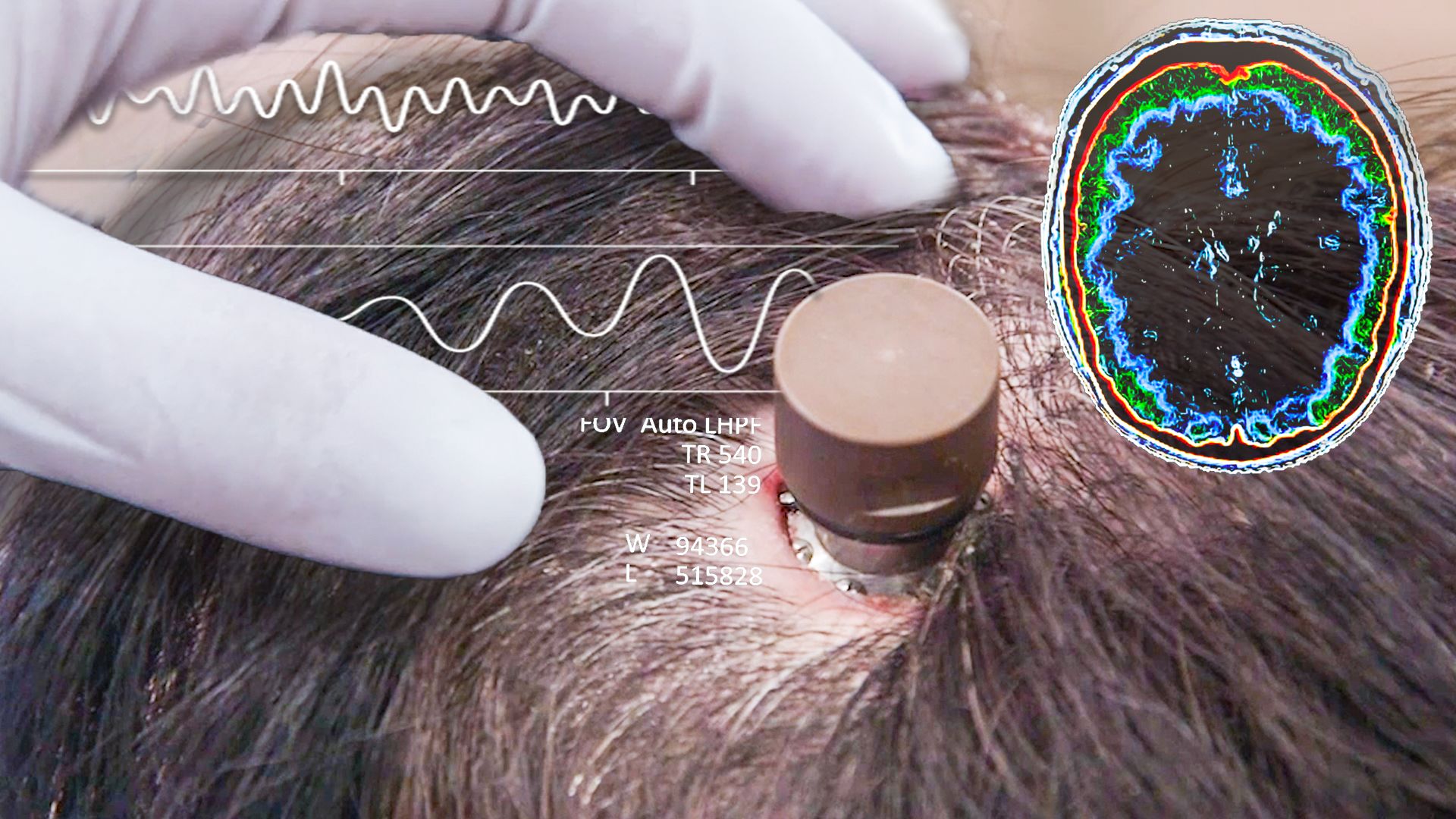Target Keyword
Elon Musk
keyword Density
6 Times
Word Count
1785 words
References
45 Reference
Related Images
25 Images
Elon Musk's Neuralink: The Future of Brain-Computer Interfaces
Introduction
Elon Musk, the visionary entrepreneur and CEO of SpaceX and Tesla, is known for his ambitious projects that aim to revolutionize various industries. One of his most intriguing ventures is Neuralink, a neurotechnology company that aims to develop brain-computer interfaces (BCIs). Neuralink has garnered significant attention and excitement due to its potential to merge the human brain with artificial intelligence. This groundbreaking technology has the potential to enhance human capabilities, treat neurological disorders, and unlock new possibilities in the field of neuroscience. In this article, we will delve into the world of Neuralink and explore the benefits, applications, challenges, and ethical considerations associated with this revolutionary technology. We will also discuss the future prospects of Neuralink and its potential impact on society.
Understanding Neuralink
Neuralink is a neurotechnology company founded by Elon Musk in 2016 with the goal of developing implantable brain-machine interfaces. The company is working on a device called the 'Link,' which is essentially a brain chip that can directly interface with the human brain. The Link consists of tiny electrodes that are inserted into the brain, allowing for a two-way communication between the brain and a computer. These electrodes can record neural activity and stimulate specific areas of the brain, opening up a world of possibilities for understanding and manipulating brain functions. The Neuralink hardware is a complex system that includes processing, communications, and charging systems. It also includes a battery and signal amplification to ensure reliable and efficient communication between the brain and the external device.
One of the key challenges in developing Neuralink technology is the miniaturization of the hardware. The device needs to be small enough to be implanted within the skull without causing discomfort or damage to the brain. Additionally, the electrodes need to be precise and durable to ensure long-term functionality. Neuralink's ultimate goal is to create a generalized brain interface that can restore autonomy to individuals with unmet medical needs. By directly connecting the brain to external devices, Neuralink aims to unlock the full potential of the human brain and revolutionize the way we interact with technology.
Benefits of Neuralink Technology
Neuralink technology has the potential to revolutionize the way we interact with computers and enhance our cognitive abilities. By connecting our brains directly to computers, Neuralink could enable us to access vast amounts of information at any time, effectively making us smarter. One of the most significant benefits of Neuralink is its potential to restore motor function in individuals with disabilities. For example, if successful, Neuralink could allow amputees to regain natural motor skills by providing precise control of prosthetic limbs. This breakthrough could significantly improve the quality of life for people with limb loss. In addition to motor function restoration, Neuralink technology holds promise for improving medical treatments for individuals with neurological conditions. People suffering from paralysis or motor neuron disease could potentially use Neuralink to regain control over their bodies. Elon Musk himself stated that the first Neuralink product will enable someone with paralysis to use a smartphone with their mind faster than someone using their thumbs.
Another exciting benefit of Neuralink is its potential to enhance cognitive abilities. By connecting our brains to artificial intelligence, Neuralink could augment human intelligence, boosting memory, learning capabilities, and mental processing speed. This could have profound implications for education, research, and problem-solving. Furthermore, Neuralink has the potential to restore vision for individuals who are blind. Elon Musk revealed that two of Neuralink's applications aim to restore vision, even for people who were born blind. This groundbreaking technology could open up a world of possibilities for those with visual impairments.
Overall, Neuralink technology offers a wide range of benefits, from improving motor function and medical treatments to enhancing cognitive abilities and restoring vision. With further advancements and research, Neuralink has the potential to transform the way we live and interact with the world.
Applications in Medicine and Research
Neuralink technology holds immense potential for applications in medicine and research. By creating a direct interface between the brain and external devices, Neuralink can revolutionize the field of neuroprosthetics. Neuroprosthetics are devices that can restore or enhance the function of the nervous system, and Neuralink's brain-computer interface (BCI) technology can greatly improve the effectiveness of these devices. One of the key applications of Neuralink in medicine is the restoration of autonomy to individuals with unmet medical needs. For example, people with spinal cord injuries or paralysis can benefit from Neuralink's BCI technology to regain control over their limbs or communicate with others. By bypassing the damaged or disconnected neural pathways, Neuralink can enable these individuals to regain independence and improve their quality of life.
In addition to restoring autonomy, Neuralink can also be used for the treatment of neurological disorders. Conditions such as Parkinson's disease, epilepsy, and depression can be managed more effectively with the help of Neuralink's BCI technology. By directly stimulating or inhibiting specific areas of the brain, Neuralink can alleviate symptoms and improve the overall well-being of patients. Furthermore, Neuralink's technology has the potential to revolutionize the field of neuroscience research. Traditionally, studying the brain has been a challenging task due to its complexity and limited access. However, with Neuralink's BCI technology, researchers can gain unprecedented insights into the functioning of the brain. They can monitor neural activity in real-time, map neural networks, and study the effects of various stimuli on the brain. This can lead to breakthroughs in understanding brain disorders, cognitive processes, and even consciousness itself.
Overall, the applications of Neuralink in medicine and research are vast and promising. From restoring autonomy to individuals with disabilities to advancing our understanding of the brain, Neuralink's BCI technology has the potential to transform healthcare and neuroscience.
Challenges and Ethical Considerations
The development of Neuralink technology brings forth several challenges and ethical considerations that need to be addressed. One of the main concerns is the potential invasion of privacy. As Neuralink aims to create a brain-computer interface that can read and interpret thoughts, there is a risk of unauthorized access to an individual's private and personal information. Safeguarding the privacy and security of users' neural data will be crucial to ensure the ethical use of this technology. Another challenge is the potential for addiction and dependency on brain-computer interfaces. As Neuralink technology becomes more advanced and accessible, there is a possibility that individuals may become overly reliant on these devices for various tasks and functions. This raises questions about the impact on human autonomy and the potential for addiction-related issues.
Furthermore, the use of animals in the testing phase of Neuralink technology raises ethical concerns. Animal testing has long been a controversial topic, and the use of animals in scientific experiments is often met with criticism. It will be important for Neuralink to prioritize the ethical treatment of animals and explore alternative testing methods to minimize harm. Additionally, the unequal access to Neuralink technology is a significant ethical consideration. As with any emerging technology, there is a risk of creating a digital divide, where only those with financial means can afford and benefit from the technology. Ensuring equitable access to Neuralink technology will be crucial to avoid exacerbating existing social inequalities.
Lastly, the potential misuse of Neuralink technology raises ethical dilemmas. While the primary goal of Neuralink is to enhance human capabilities and improve quality of life, there is a possibility that the technology could be used for nefarious purposes. It is essential to establish robust regulations and ethical guidelines to prevent misuse and ensure responsible use of this powerful technology.
The Future of Neuralink
The future of Neuralink holds immense potential for revolutionizing the way we interact with technology and understand the human brain. One of the key goals of Neuralink is to develop brain-computer interfaces that can restore autonomy to individuals with unmet medical needs. This technology has the potential to greatly improve the quality of life for people with disabilities, allowing them to regain control over their bodies and communicate more effectively. In addition to medical applications, Neuralink also envisions a future where brain-computer interfaces can enhance human capabilities. By connecting our brains directly to computers and artificial intelligence systems, we could potentially access information and perform tasks at unprecedented speeds. This could lead to advancements in fields such as education, research, and even entertainment.
Furthermore, Neuralink aims to address ethical considerations and ensure the safety and privacy of individuals using brain-computer interfaces. As the technology progresses, it will be crucial to establish guidelines and regulations to protect users from potential risks and misuse of their neural data. Looking ahead, the future of Neuralink holds the promise of further advancements in brain-computer interface technology. With ongoing research and development, we can expect to see improvements in the efficiency, reliability, and accessibility of these interfaces. This could open up new possibilities for treating neurological disorders, expanding our understanding of the human brain, and pushing the boundaries of human potential. In conclusion, Neuralink is at the forefront of developing brain-computer interface technology that has the potential to revolutionize various aspects of our lives. From medical applications to enhancing human capabilities, the future of Neuralink holds exciting possibilities. As the technology continues to evolve, it will be important to address ethical considerations and ensure the responsible and safe use of brain-computer interfaces.
Conclusion
In conclusion, Elon Musk's Neuralink has the potential to revolutionize the field of brain-computer interfaces. With its advanced technology and innovative approach, Neuralink aims to bridge the gap between humans and machines, opening up a world of possibilities for medical treatments, research, and human enhancement. The benefits of Neuralink technology are vast, ranging from restoring lost sensory functions to enhancing cognitive abilities. It has the potential to improve the quality of life for individuals with disabilities and provide new insights into the workings of the human brain. However, the development and implementation of Neuralink also come with challenges and ethical considerations. Privacy concerns, potential misuse of the technology, and the need for informed consent are important factors that need to be addressed.
Despite these challenges, the future of Neuralink looks promising. As the technology continues to advance, we can expect to see more applications in medicine, research, and even everyday life. The potential for brain-computer interfaces to enhance human capabilities and improve our understanding of the brain is truly exciting. In conclusion, Neuralink represents a significant step forward in the field of brain-computer interfaces. With its potential to revolutionize medicine and research, it holds the promise of improving the lives of individuals and advancing our understanding of the human brain. As we move forward, it is crucial to address the challenges and ethical considerations associated with this technology to ensure its responsible and beneficial use.
























